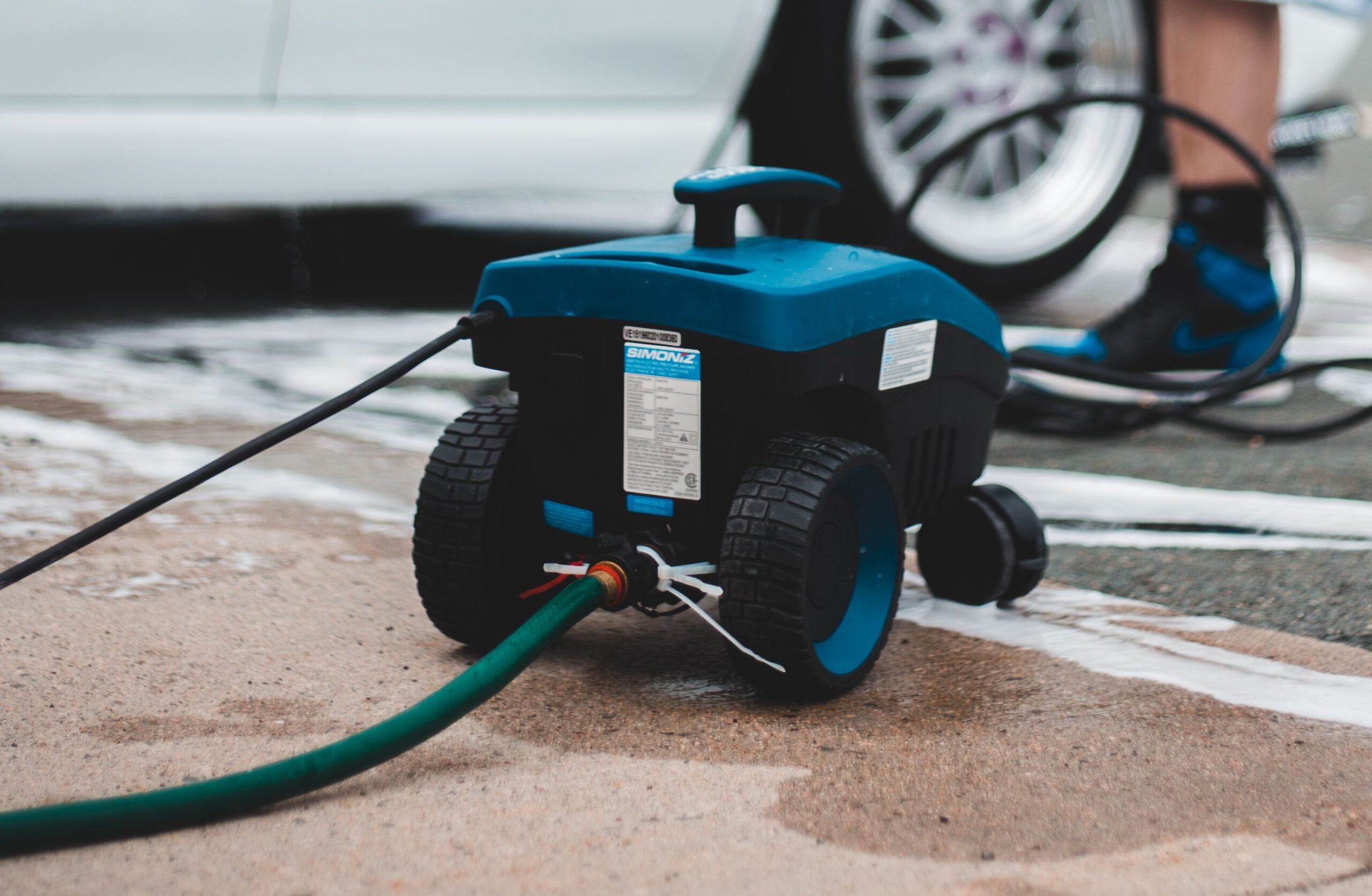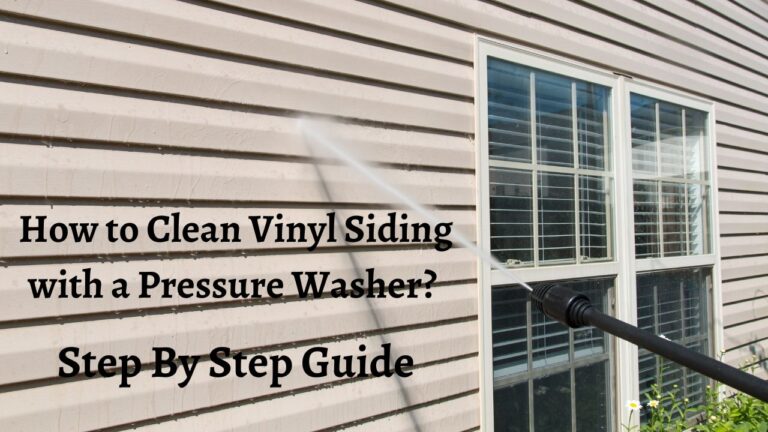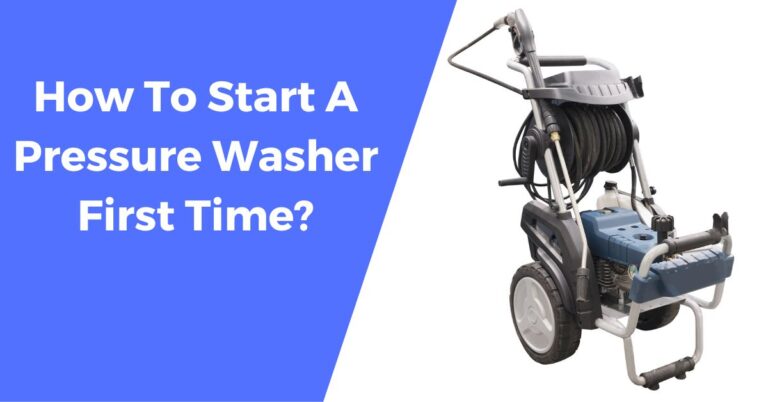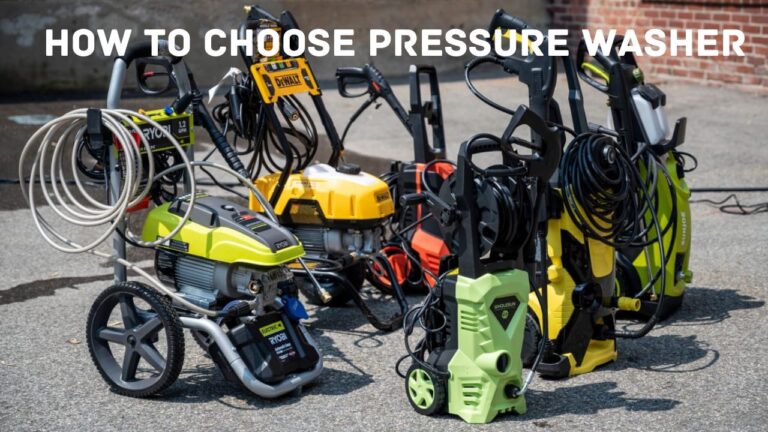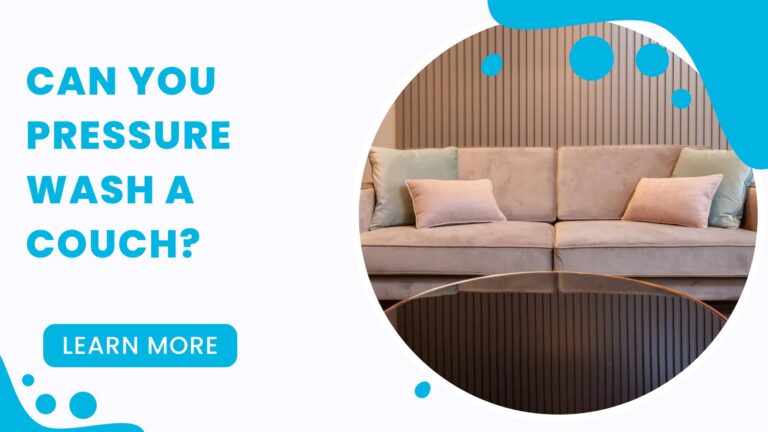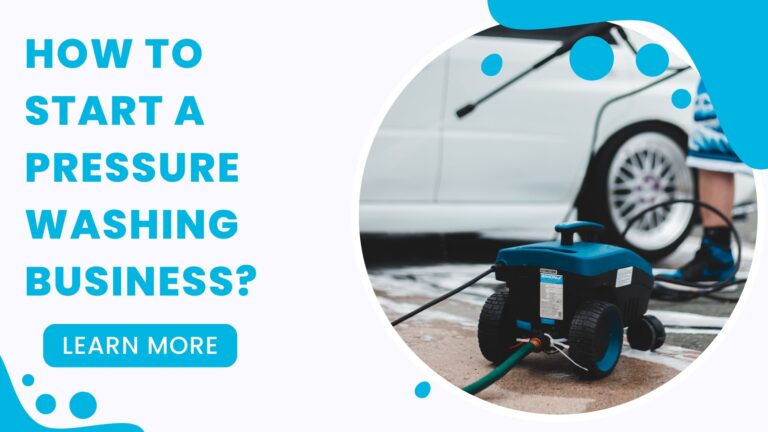What Surfaces Can Be Pressure Washed? How To Power Wash Like A Pro!
Maintaining the appearance of your home is important for several reasons. Not only does it make your home more attractive, but it can also boost its value.
One of the best ways to keep your property looking its best is to pressure wash it regularly. However, you must know what surfaces can be power cleaned without damaging.
Pressure washing removes dirt, grime, and pollen from all surfaces, including siding, driveways, decks, and patios. It’s a quick and satisfying way to spruce up your property.
In just a few minutes, you can see a dramatic difference. If you’re looking for an easy way to boost the beauty and value of your home, pressure washing is a great place to start.
However, it’s essential to know that not every surface is safe for pressure washing. Pressure washing can damage delicate surfaces such as painted walls or cars. It can also cause serious injuries if not used properly.
Before pressure washing any surface, please research to ensure it’s safe. When in doubt, it’s always best to consult a professional.
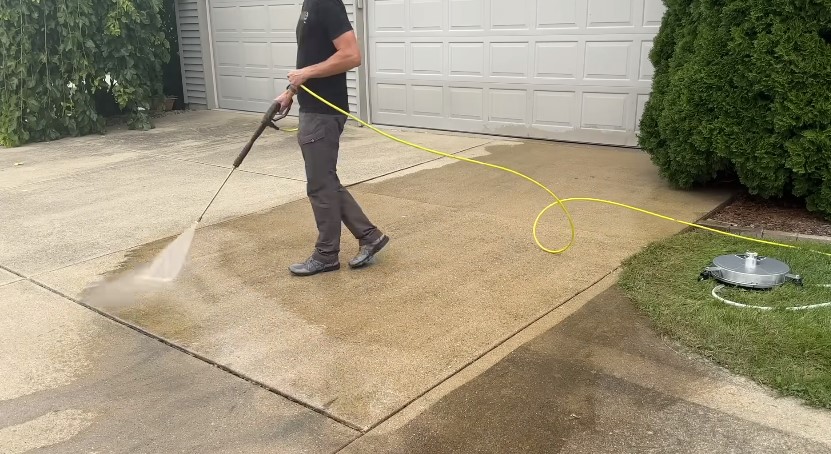
Common Surfaces That Are Safe to Pressure Wash
These are common surfaces that can be pressure washed. However, not using the pressure correctly can cause damage, so practice on an inconspicuous surface first. Follow the instructions from the manufacturer to avoid damage and injury.
Patios and Decks
It’s not unusual for algae, mold, and mildew to start appearing on your patio and deck over time, especially if your deck or patio is in a shady area with little sunlight. Pressure washing is an effective way to remove grime and stains, but using a deck or patio cleaner and pressure washing is best for long-lasting results.
Deck and patio cleaners are designed to loosen and remove dirt, grime, and stains without damaging the surface. For best results, follow the manufacturer’s instructions for application and use a soft-bristle brush to scrub the surface.
Once the cleaner has had a chance to work its magic, rinse away any residual cleaner with a garden hose. Your deck or patio will be sparkling clean and ready for summertime fun.
Driveways and Entryways
A driveway is one of the first things people see when they visit your home, so keeping it in good condition is important. Unfortunately, driveways can be susceptible to damage from weather, traffic, and other factors.
One common problem is the formation of black drip marks or a chalky white substance on concrete or limestone. Mold spores and limestone leaching from the stone cause these marks. To protect your driveway, it is important to regularly clean and seal it. This will help to prevent the growth of mold and mildew and extend the life of your driveway.
Walls And Siding
Your building’s walls and siding take a beating from the elements daily. That’s why having a consistent cleaning schedule for your walls and siding is a good preventative maintenance practice. Depending on the amount of exposure to the elements, you should clean your walls and siding every one to three years.
Pressure washing is an effective way to clean these surfaces and prevent further damage to your building. Plus, it will keep your family safe and healthy by stopping the growth of mold and mildew.
Many people think pressure washing is a one-size-fits-all solution to all their cleaning needs, but this isn’t the case.
Not only can pressure washing damage certain surfaces, but it can also be hazardous if not used correctly. Did you know that every year, there are thousands of injuries caused by pressure washers?
Consult a professional if unsure what surfaces can be pressure washed. It’s always better to be safe than sorry.
What Surfaces Can Be Pressure Washed? FAQ
1. Can I pressure wash all outdoor surfaces?
While pressure washing can effectively clean many outdoor surfaces, it’s not recommended for all surfaces. Some surfaces may be too delicate or prone to damage from high-pressure water. Here are some surfaces that should be avoided when pressure washing:
1. Windows: High-pressure water can cause cracks or breakage in windows.
2. Wooden surfaces: Pressure washing can damage softwood, painted, and delicate wood surfaces.
3. Electrical components: Never pressure wash electrical components, as this can cause electrical shock or damage to the components.
4. Cars: High-pressure water can damage the paint and finish of cars.
5. Outdoor furniture: Delicate outdoor furniture, such as wicker or rattan, can be damaged by high-pressure water.
It’s important to check the manufacturer’s instructions for any surface you plan to pressure wash and to use the appropriate techniques and equipment for each surface. When in doubt, it’s best to consult a professional to ensure your surfaces are cleaned safely and effectively.
2. How can I ensure the surfaces can withstand the pressure?
Before pressure washing any surface, it’s important to ensure that it can withstand the pressure and force of the water. Here are some steps you can take to ensure that your surfaces are safe to pressure wash:
1. Check the manufacturer’s instructions: Check the manufacturer’s instructions for the surface you plan to pressure wash. This will give you an idea of the recommended pressure levels and any special precautions you must take.
2. Test a small area: Before pressure washing a large area, test a small, inconspicuous area to make sure the surface can handle the pressure. This will also give you an idea of the pressure level you should use.
3. Check for damage: Inspect the surface for any signs of wear, such as cracks, chips, or peeling paint. If the surface is damaged, pressure washing may be unsafe.
4. Use the right nozzle: Use the appropriate nozzle for your cleaning surface. A wide fan tip is generally safe for most surfaces, while a narrow tip should be used for stubborn stains.
5. Keep the pressure at a moderate level: Keep the pressure at a moderate level and avoid holding the nozzle too close to the surface. This will help prevent damage to the surface.
By taking these steps, you can ensure that your surfaces are safe to pressure wash and avoid causing any damage.
3. Can I use a pressure washer to clean vinyl siding?
Absolutely! A pressure washer can be an effective tool for cleaning vinyl siding. Vinyl siding is a durable material that can withstand the pressure of a pressure washer. Still, it’s important to use the proper techniques to avoid damaging the siding or forcing water behind it. When pressure washing vinyl siding, use a wide fan tip and keep the pressure at a moderate level. It’s also important to avoid holding the nozzle too close to the surface, as this can cause dents or scratches.
Additionally, it’s a good idea to work from the top down and rinse thoroughly to prevent streaking. It’s important to take the appropriate safety precautions when pressure washing, including wearing protective clothing and eyewear and using caution when working on a ladder. With the right techniques and care, pressure washing can effectively clean and maintain vinyl siding.
4. What about cleaning roofs?
Cleaning roofs with a pressure washer can be effective. It’s important to take the proper safety precautions and use the right techniques to avoid damaging the roof or injuring yourself. Pressure washing can be particularly effective for removing moss, algae, and other buildup from roofs. However, it’s important to use a low-pressure setting and avoid holding the nozzle too close to the surface to prevent damage to the shingles or tiles.
Additionally, it’s important to use caution when working on a roof and to wear appropriate safety gear, including non-slip shoes, a safety harness, and eye protection. It’s also a good idea to avoid pressure washing roofs in poor condition or with existing damage, as this can cause further damage or leaks. If you’re unsure about the safety or effectiveness of pressure washing your roof, it’s best to consult with a professional roofing contractor.
5. Can aluminum siding be power washed safely?
Yes, aluminum siding can be safely power washed if done correctly. Aluminum siding is a durable material that can withstand the pressure of a power washer, but it’s important to use the proper techniques to avoid damaging the siding or forcing water behind it. When power washing aluminum siding, use a wide fan tip and keep the pressure moderate. It’s also important to avoid holding the nozzle too close to the surface, as this can cause dents or scratches.
Additionally, working from the top down and rinse thoroughly to prevent streaking is a good idea. It’s important to take the appropriate safety precautions when power washing, including wearing protective clothing and eyewear and using caution when working on a ladder. With the right techniques and care, power washing can be an effective way to clean and maintain aluminum siding.
6. Should I use high pressure when pressure washing?
It depends on the surface you are cleaning. For delicate surfaces like wood or painted surfaces, it is best to use low pressure settings. However, for tougher stains and grime, high pressure can be used on durable surfaces like concrete or brick.
The pressure you should use when pressure washing depends on the surface you are cleaning. While high pressure can be effective for removing tough grime and stains, it can also damage certain surfaces, such as soft wood, painted surfaces, and delicate materials. For most surfaces, starting with a lower pressure setting is best, and gradually increasing the pressure as needed. A pressure washer with adjustable pressure settings can be helpful for this.
Using the right nozzle tip can also help control the pressure and prevent damage. For example, a wide fan tip can be effective for general cleaning, while a narrow tip can be used for stubborn stains. It’s important always to follow the manufacturer’s instructions for your pressure washer and to take the appropriate safety precautions to avoid injury or damage.
7. Is it safe to pressure wash pressure-treated wood?
Yes, it is generally safe to pressure wash pressure-treated wood. However, it’s important to use the proper techniques and equipment to avoid damaging the wood or removing the protective chemicals that make it resistant to rot and decay. When pressure washing pressure-treated wood, use a wide fan tip and keep the pressure at a moderate level to avoid damaging the wood fibers.
It’s also important to keep the nozzle moving and avoid holding it too close to the surface to prevent gouging or splintering. Additionally, it’s a good idea to let the wood dry completely before applying any sealants or stains. With the right techniques and care, pressure washing can effectively clean and maintain pressure-treated wood surfaces.
8. Can I pressure wash around my home?
Yes, pressure washing can be a great way to clean and maintain a variety of surfaces around your home. With a pressure washer, you can effectively remove dirt, grime, and other types of buildup from surfaces such as siding, driveways, decks, and even outdoor furniture.
9. Do I need to hire a power washing company for pressure washing service?
While hiring a power washing company can be a convenient option, pressure washing is a task that home users can do with the right equipment and knowledge. With a pressure washer and some basic safety precautions, you can effectively clean various surfaces around your home. However, it’s important to take the time to learn the proper techniques and safety measures to ensure that you don’t damage your property or injure yourself.
Additionally, certain surfaces may require specialized equipment or cleaning solutions, so it’s important to do your research beforehand. With the right preparation and care, pressure washing can be a satisfying and cost-effective way to keep your home looking its best.
10. Are there any surfaces I should avoid pressure washing?
Yes, certain surfaces should be avoided when pressure washing. Delicate surfaces such as painted surfaces, stucco, and some types of wood can be damaged by the high pressure of a pressure washer. Additionally, surfaces that have cracks, loose paint, or other types of damage should not be pressure washed as it can cause further damage.
It’s important to understand the limitations of pressure washing and to always use the appropriate techniques and equipment for each surface. When in doubt, it’s best to consult a professional to ensure your surfaces are cleaned safely and effectively.

